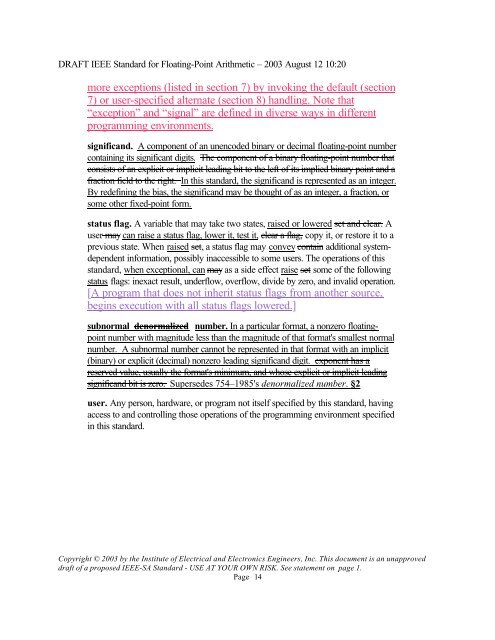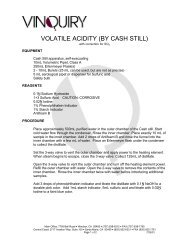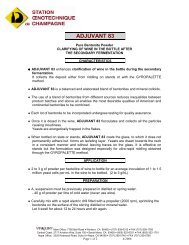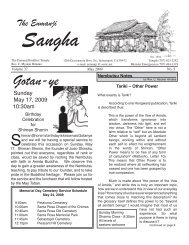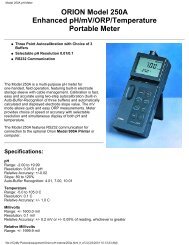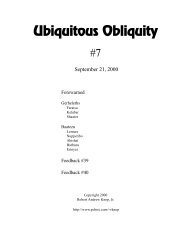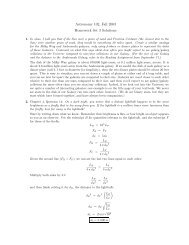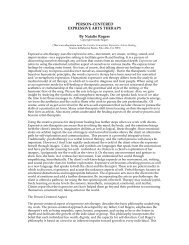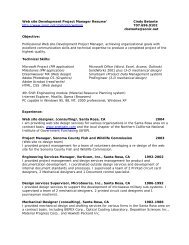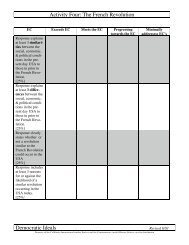DRAFT IEEE Standard for Binary Floating-Point Arithmetic - Sonic.net
DRAFT IEEE Standard for Binary Floating-Point Arithmetic - Sonic.net
DRAFT IEEE Standard for Binary Floating-Point Arithmetic - Sonic.net
Create successful ePaper yourself
Turn your PDF publications into a flip-book with our unique Google optimized e-Paper software.
<strong>DRAFT</strong> <strong>IEEE</strong> <strong>Standard</strong> <strong>for</strong> <strong>Floating</strong>-<strong>Point</strong> <strong>Arithmetic</strong> – 2003 August 12 10:20<br />
more exceptions (listed in section 7) by invoking the default (section<br />
7) or user-specified alternate (section 8) handling. Note that<br />
“exception” and “signal” are defined in diverse ways in different<br />
programming environments.<br />
significand. A component of an unencoded binary or decimal floating-point number<br />
containing its significant digits. The component of a binary floating-point number that<br />
consists of an explicit or implicit leading bit to the left of its implied binary point and a<br />
fraction field to the right. In this standard, the significand is represented as an integer.<br />
By redefining the bias, the significand may be thought of as an integer, a fraction, or<br />
some other fixed-point <strong>for</strong>m.<br />
status flag. A variable that may take two states, raised or lowered set and clear. A<br />
user may can raise a status flag, lower it, test it, clear a flag, copy it, or restore it to a<br />
previous state. When raised set, a status flag may convey contain additional systemdependent<br />
in<strong>for</strong>mation, possibly inaccessible to some users. The operations of this<br />
standard, when exceptional, can may as a side effect raise set some of the following<br />
status flags: inexact result, underflow, overflow, divide by zero, and invalid operation.<br />
[A program that does not inherit status flags from another source,<br />
begins execution with all status flags lowered.]<br />
subnormal denormalized number. In a particular <strong>for</strong>mat, a nonzero floatingpoint<br />
number with magnitude less than the magnitude of that <strong>for</strong>mat's smallest normal<br />
number. A subnormal number cannot be represented in that <strong>for</strong>mat with an implicit<br />
(binary) or explicit (decimal) nonzero leading significand digit. exponent has a<br />
reserved value, usually the <strong>for</strong>mat's minimum, and whose explicit or implicit leading<br />
significand bit is zero. Supersedes 754–1985's denormalized number. §2<br />
user. Any person, hardware, or program not itself specified by this standard, having<br />
access to and controlling those operations of the programming environment specified<br />
in this standard.<br />
Copyright © 2003 by the Institute of Electrical and Electronics Engineers, Inc. This document is an unapproved<br />
draft of a proposed <strong>IEEE</strong>-SA <strong>Standard</strong> - USE AT YOUR OWN RISK. See statement on page 1.<br />
Page 14


